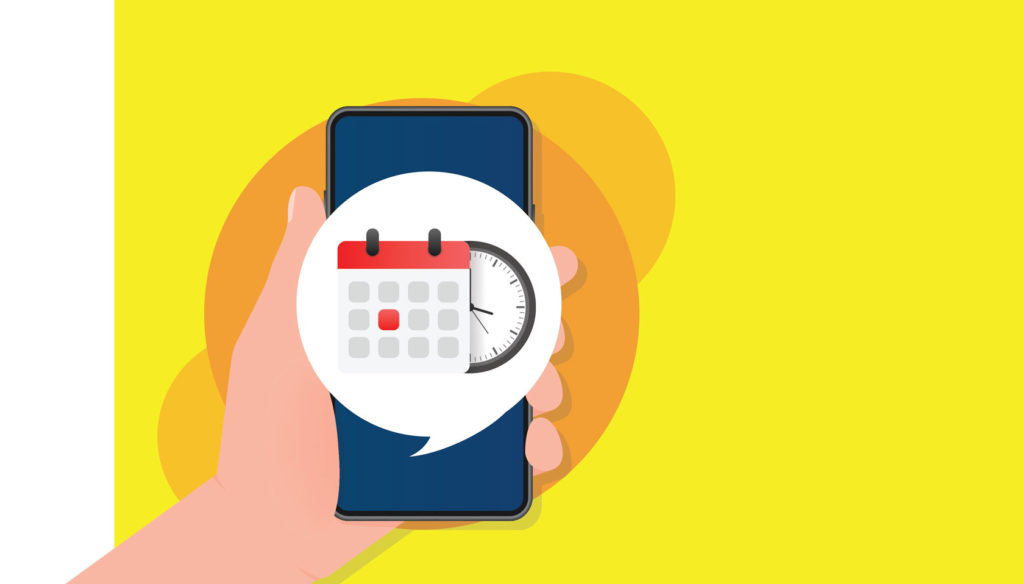VECTORUP/ISTOCK/GETTY IMAGES PLUS
7 simple ways your phone can help you protect skin health and detect skin cancer early.
If you’re like most people, you keep your cell phone nearby at all times. Your phone is so much more than just a device to connect with people – it’s an indispensable source of information and entertainment.
You may not know, though, that your phone can also be a great tool to help you protect your skin’s health. Features like alarms and calendar reminders can assist with sun protection and monthly skin checks. And a phone camera is all you need to track your skin over time, enabling you to spot anything new, changing or unusual — potential skin cancer warning signs.
When caught and treated early, skin cancers are usually curable, so it makes sense to use your ever-present device to assist you. Here are seven ways you can dial up efforts to monitor your skin and keep it healthy:
1. Schedule Reminders
Every phone has a calendar. Use yours to set a recurring reminder to perform monthly skin self-exams. We recommend setting these to go off in the morning or any time when you’re likely to be home to tackle the task. While you’re at it, set a reminder to schedule your annual skin exam with your dermatologist. If your physician has recommended more frequent appointments, your phone can keep track of it all.
2. Set Alarms
Your phone’s alarm clock isn’t just good for getting you out of bed. It can also be a great tool to remind you to reapply sunscreen. The Skin Cancer Foundation recommends that you reapply every two hours or immediately after swimming or sweating.
3. Fire up Your Flashlight
Good lighting is essential to get a close look at your skin. While natural light is ideal, it’s not always possible. The direct light from your phone’s flashlight can illuminate the skin. It’s especially helpful for hard-to-see areas beneath your hair or beard, the underarms or between your toes.
4. Get Camera Ready
Any phone with a camera can help you with skin surveillance. During your monthly self-exams, take photos of your spots, freckles, moles or other lesions. If you have a lot, ask your dermatologist to identify spots you should track.
Since it can be difficult to consistently get the same angle for each photo over time, consider positioning an object, like a dime, a ruler or a pencil eraser, next to each spot for scale. Take a photo of each spot with and without the flash, to help with color identification. If possible, ask a friend or partner to scan your back and capture anything that does not look right.
About photos: Remember that no matter how good a photograph is, it cannot accurately convey lesion texture, which can be important for diagnosis. That’s why professional skin exams are a vital part of the process.
5. Map and Monitor Monthly
During your monthly self-exam, compare photos from previous months and note all changes. If anything looks different or if you see something that wasn’t there last month, schedule an appointment with your dermatologist right away. Any note-keeping app on your phone can help you document findings to share with your doctor.
About organization: It may help to create folders or albums in your phone to store your photos. This ensures that you don’t delete them by accident. Also, when possible, rename the files so they are descriptive (“right ankle freckle”) or add text to the image by using a free photo editor.
6. There’s an App for That
Search your favorite app store and you will find a number of mobile apps that have features such as magnifiers, mole trackers and automated reminders. They are designed to help make skin cancer early detection a more intuitive process. But remember that no matter how good a phone app seems to be, steer clear of any that claim to diagnose skin cancers. Only a trained dermatologist can do that.
7. Spread the Word
Our phones keep us more connected than ever before. We can call, text, email or post on social media, reaching hundreds of people in a matter of minutes. As you take time to protect your skin, encourage the people you know to do the same. Text your parents and siblings to remind them to do their skin checks. Or, share a social post about the importance of annual skin exams.
Life can get busy, and skin health can sometimes be an afterthought. By taking full advantage of the technology that’s always in your pocket, you can show your skin some much needed love.





